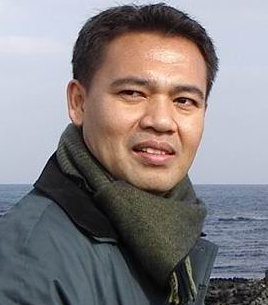Case Study: Optimizing Skin Regeneration After Aesthetic Procedures with Dermocosmetic Skin-Healing Care
DOI:
https://doi.org/10.28932/jmh.v6i2.8269Keywords:
antalgicine, ecobiology-based dermocosmetics, skin regenerationAbstract
The use of ecobiology-based dermocosmetics containing Antalgicine™ can expedite the optimization of skin regeneration post-aesthetic procedures. The aim of this case study assess the clinical benefit of Antalgicine™ post-aesthetic procedures. Six patients were recruited into this case study which utilizes subjective and objective measurements. Antalgicine™ was applied using a split-face study method. Subjective evaluation is graded by patients using a 1-5 Likert scale, along with objective evaluation, was performed by a blinded dermatologist. Results showed an objective reduction in post-aesthetic procedure on day 7, namely 40% for microneedling, 32% for fractional radiofrequency, and 29% for picosecond laser, as well as subjective reductions in every post-aesthetic procedure sensation, specifically pain, pruritus, tightness, and burning sensation at 67%, 75%, 67%, 33% for microneedling, 71%, 67%, 67%, 50% for fractional radiofrequency, and 67%, 75%, 78%, 60% for picosecond laser, respectively. As a conclusion, Antalgicine™ can reduce post-aesthetic procedure effects for optimizing skin regeneration.Downloads
References
Adib Y, Bensussan A, Michel L. Cutaneous wound healing: a review about innate immune response and current therapeutic applicationss. Mediators Inflamm. 2022;2022:1–16.
Sorg H, Sorg CGG. Skin wound healing: of players, patterns, and processes. Eur Surg Res. 2023;64(2):141–57.
Tottoli EM, Dorati R, Genta I, Chiesa E, Pisani S, Conti B. Skin wound healing process and new emerging technologies for skin wound care and regeneration. Pharmaceutics. 2020;12(8):735.
Choi S, Yoon M, Choi KY. Approaches for regenerative healing of cutaneous wound with an emphasis on strategies activating the Wnt/Betha-catenin pathway. Adv wound care. 2022;11(2):70–86.
Kamolz LP, Griffith M, Finnerty C, Kasper C. Skin regeneration, repair, and reconstruction. Biomed Res Int. 2015;2015:1.
Shpichka A, Butnaru D, Bezrukov EA, Sukhanov RB, Atala A, Burdukovskii V, et al. Skin tissue regeneration for burn injury. Stem Cell Res Ther. 2019;10(94):1–16.
Alster TS, Graham PM. Microneedling: a review and practical guide. Dermatologic Surg. 2018;44(3):397–404.
Kleidona IA, Karypidis D, Lowe N, Myers S, Ghanem A. Fractional radiofrequency in the treatment of skin aging: an evidence-based treatment protocol. J Cosmet Laser Ther. 2020;22(1):9–25.
Shimojo Y, Nishimura T, Hazama H, Ito N, Awazu K. Picosecond laser-induced photothermal skin damage evaluation by computational clinical trial. Laser Ther. 2020;29(1):61–72.
Rizzi V, Gubitosa J, Fini P, Cosma P. Neurocosmetics in skincare—the fascinating world of skin–brain connection: a review to explore ingredients, commercial products for skin aging, and cosmetic regulation. Cosmetics. 2021;8(3):66.
Torres A, Rego L, Martins MS, Ferreira MS, Cruz MT, Sousa E, et al. How to promote skin repair? In-depth look at pharmaceutical and cosmetic strategies. Pharmaceuticals. 2023;16(4):573.
Dreno B, Khosrotehrani K, De Barros Silva G, Wolf JR, Kerob D, Trombetta M, et al. The role of dermocosmetics in the management of cancer-related skin toxicities: international expert consensus. Support Care Cancer. 2023;31(12):672.
Dreno B, Araviiskaia E, Berardesca E, Bieber T, Hawk J, Sanchez-Viera M, et al. The science of dermocosmetics and its role in dermatology. J Eur Acad Dermatology Venereol. 2014;28(11):1409–17.
Bhatia AH, Hsu J, Schlesinger T, Weiss R. Optimizing wound healing for cosmetic and medical dermatologic procedures. Pract dermatology. 2018;1:42–5.
Bridges A, Sailes F, Chacon A, Rhobaye D, Malik K, Khizar S, et al. Overview of energy-based treatments in aesthetics [Internet]. American Cosmetic Association. 2023 [cited 2024 Jan 26]. Available from: https://www.cosmeticassociation.org/overview-of-energy-based-treatments-in-aesthetics/
Pleguezuelos-Beltrán P, Gálvez-Martín P, Nieto-García D, Marchal JA, López-Ruiz E. Advances in spray products for skin regeneration. Bioact Mater. 2022;16:187–203.
Gonçalves MMB de MM, Pina MESRT de. Dermocosmetic care for rosacea. Brazilian J Pharm Sci. 2017;53(4):1–16.
Dréno B. The microbiome, a new target for ecobiology in dermatology. Eur J Dermatology. 2019;29:15–8.
Bergera-Virassamynaïk S, Ardiet N, Sayag M. Evaluation of the efficacy of an ecobiological dermo-cosmetic product to help manage and prevent relapses of eyelid atopic dermatitis. Clin Cosmet Investig Dermatol. 2023;16:677–86.
Callejon S, Giraud F, Larue F, Buisson A, Mateos L, Grare L, et al. Impact of leave-on skin care products on the preservation of skin microbiome: an exploration of ecobiological approach. Clin Cosmet Investig Dermatol. 2023;16:2727–35.
Mcewen L, Déchelette C, Fauverghe S. Ecobiology: More than just a word, a philosophy emerging from skincare. Ethics Med Public Heal. 2023;31:1–8.
Polena H, Chavagnac-Bonneville M, Sayag M. Improvement of quality of life in dialysis and diabetic patients by skin dryness and pruritus management with an ecobiological dermo-cosmetic product. Clin Cosmet Investig Dermatol. 2022;15:2143–52.
Ueda H. Review of kyotorphin research: a mysterious opioid analgesic dipeptide and its molecular, physiological, and pharmacological characteristics. Front Med Technol. 2021;3:1–11.
Fauger A, Sonck S, Kluger N, Chavagnac-Bonneville M, Sayag M. Tattoo aftercare management with a dermo-cosmetic product: Improvement in discomfort sensation and skin repair quality. J Cosmet Dermatol. 2022;21(3):1051–6.
St. Clair CO, Papadopoulos EJ. Considerations in the assessment of clinical benefit with a focus on pain: A regulatory perspective. Neurotherapeutics. 2020;17(3):770–3.
Yang X xiao, Zhao M meng, He Y fan, Meng H, Meng Q yang, Shi Q yin, et al. Facial skin aging stages in Chinese females. Front Med. 2022;9:1–13.
Berardesca E, Bonfigli A, Cribier B, Flament F, Vicic M, Kerob D, et al. A split-face study assessing the clinical benefit, tolerability and subject satisfaction of a dermocosmetic in subjects with rosacea associated with erythema and sensitive skin. Clin Cosmet Investig Dermatol. 2020;13:751–8.
Addor FAS, de Souza MC, Trapp S, Peltier E, Canosa JM. Efficacy and safety of topical dexpanthenol-containing spray and cream in the recovery of the skin integrity compared with petroleum jelly after dermatologic aesthetic procedures. Cosmetics. 2021;8(3):87.
Gowda A, Healey B, Ezaldein H, Merati M. A systematic review examining the potential adverse effects of microneedling. J Clin Aesthet Dermatol. 2021;14(1):45.
Halachmi S, Onder M, Fritz K. Fractional radiofrequency. In: Lapidoth M, Halachmi S, editors. Radiofrequency in Cosmetic Dermatology. Karger Publishers; 2015. p. 50–61.
Wu DC, Goldman MP, Wat H, Chan HHL. A systematic review of picosecond laser in dermatology: evidence and recommendations. Lasers Surg Med. 2021;53(1):9–49.
Balderas-Cordero D, Canales-Alvarez O, Sánchez-Sánchez R, Cabrera-Wrooman A, Canales-Martinez MM, Rodriguez-Monroy MA. Anti-inflammatory and histological analysis of skin wound healing through topical application of Mexican propolis. Int J Mol Sci. 2023;24(14):11831.
Polena H, Tisserand E, Marty E, Sayag M, Graizeau C, Dréno B. A novel ecobiological dermo-cosmetic product in wound healing and scar management. In: EADV Congress 2023. Berlin: NAOS Group; 2023.
Boothby IC, Cohen JN, Rosenblum MD. Regulatory T cells in skin injury: At the crossroads of tolerance and tissue repair. Sci Immunol. 2020;5(47):eaaz9631.
Downloads
Published
How to Cite
Issue
Section
License
Copyright (c) 2024 Stanley Setiawan, Hari Darmawan, Samuel S Putranto, Angela M Linata, Stephanie Salim, Shelly Nobel

This work is licensed under a Creative Commons Attribution-NonCommercial 4.0 International License.
Authors who publish with this journal agree to the following terms:
- Authors retain the copyright and grant the journal right of first publication with the work
simultaneously licensed under a Creative Commons Attribution-NonCommercial 4.0 International License that allows others to share the work with an acknowledgement of the work's authorship and initial publication in this journal. - Authors are able to enter into separate, additional contractual arrangements for the nonexclusive distribution of the journal's published version of the work (e.g., post it to an institutional repository or publish it in a book), with an acknowledgement of its initial publication in this journal.
 This work is licensed under a Creative Commons Attribution-NonCommercial 4.0 International License.
This work is licensed under a Creative Commons Attribution-NonCommercial 4.0 International License.

















